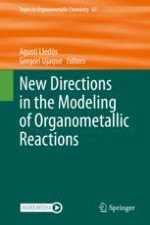
2020 | OriginalPaper | Chapter
What Makes a Good (Computed) Energy Profile?
Authors : Odile Eisenstein, Gregori Ujaque, Agustí Lledós
Published in: New Directions in the Modeling of Organometallic Reactions
Publisher: Springer International Publishing
Activate our intelligent search to find suitable subject content or patents.
Select sections of text to find matching patents with Artificial Intelligence. powered by
Select sections of text to find additional relevant content using AI-assisted search. powered by